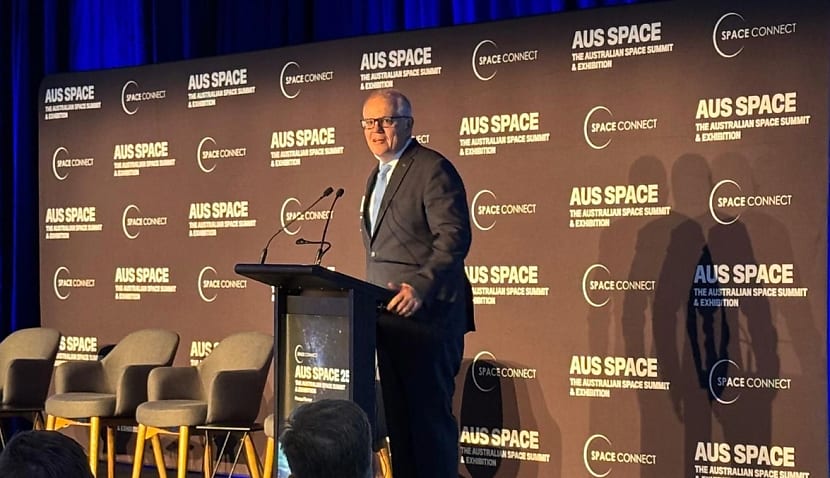Speaking at Space Connect’s Australian Space Summit & Exhibition, the former prime minister urged Australia to develop a stronger space capability that would be interoperable with systems from the US, UK and Japan.
“By 2030, with deliberate development, Australia can offer unique contributions: southern-hemisphere sensors watching the skies, a strategic location for space operations, and additional resilient satellites and launch options,” he said.
“An allied operation in the Indo-Pacific in 2030 could count on Australian satellites for communications and surveillance, Australian sensors to warn of enemy ASAT (anti-satellite weapon) moves, and even Australian launch pads to rapidly deploy new assets.
“All of this augments the strengths of the US, Japan, and Europe/UK, creating a more robust collective space posture that deters aggression.”
He also warned that China was advancing in satellite manoeuvrability, launch and spaceplane tech, while the sector had become more entangled in geopolitical rivalry.
To combat those issues, he added, space could form the basis of a new “pillar three” for AUKUS.
Last year, the former prime minister took a job as the chairman of Space Centre Australia, the planned spaceport in far north Queensland, while space has already formed a small part of the current AUKUS agreement.
In February, a new AUKUS radar designed to track dangerous objects in geosynchronous orbit has completed construction in Exmouth, Western Australia.
The US Space Force said the work was completed three months ahead of schedule and that testing and mission system integration were underway.
The instrument is one of three planned under the defence coalition, with two other sites planned for the UK and the US.
It’s hoped the three together – known as the Deep Space Advanced Radar Capability (DARC) – will provide 24-hour global and all-weather coverage that’s difficult to obtain with existing technology.
Space Force said one of the core benefits of the new radar is that it would operate in all weather and make observations through clouds during the daytime, which is impossible with traditional optical telescopes.
Northrop Grumman was recently awarded a contract for the second site, which is currently proposed to be located at a UK Ministry of Defence site in Pembrokeshire, Wales.
A third site will be located in the “Continental United States” at a to-be-determined location, pending the completion of environmental and airspace studies.
The entire DARC system is expected to be completed by 2032.

Adam Thorn
Adam is a journalist who has worked for more than 40 prestigious media brands in the UK and Australia. Since 2005, his varied career has included stints as a reporter, copy editor, feature writer and editor for publications as diverse as Fleet Street newspaper The Sunday Times, fashion bible Jones, media and marketing website Mumbrella as well as lifestyle magazines such as GQ, Woman’s Weekly, Men’s Health and Loaded. He joined Momentum Media in early 2020 and currently writes for Australian Aviation and World of Aviation.

